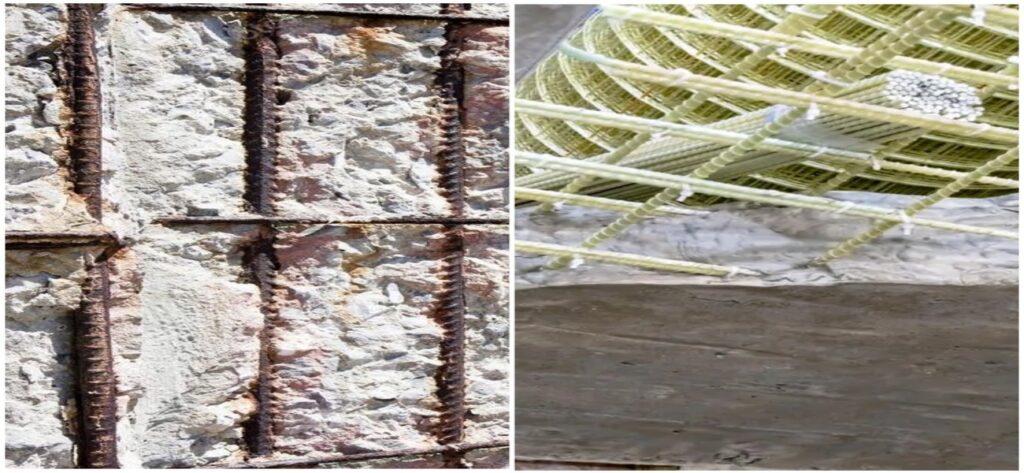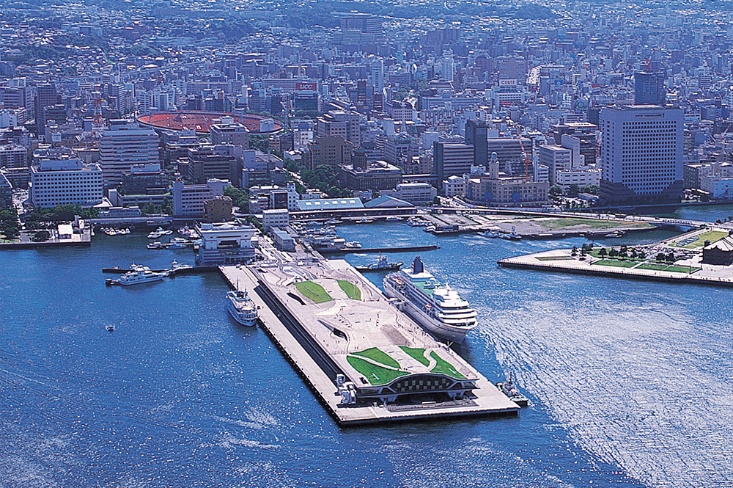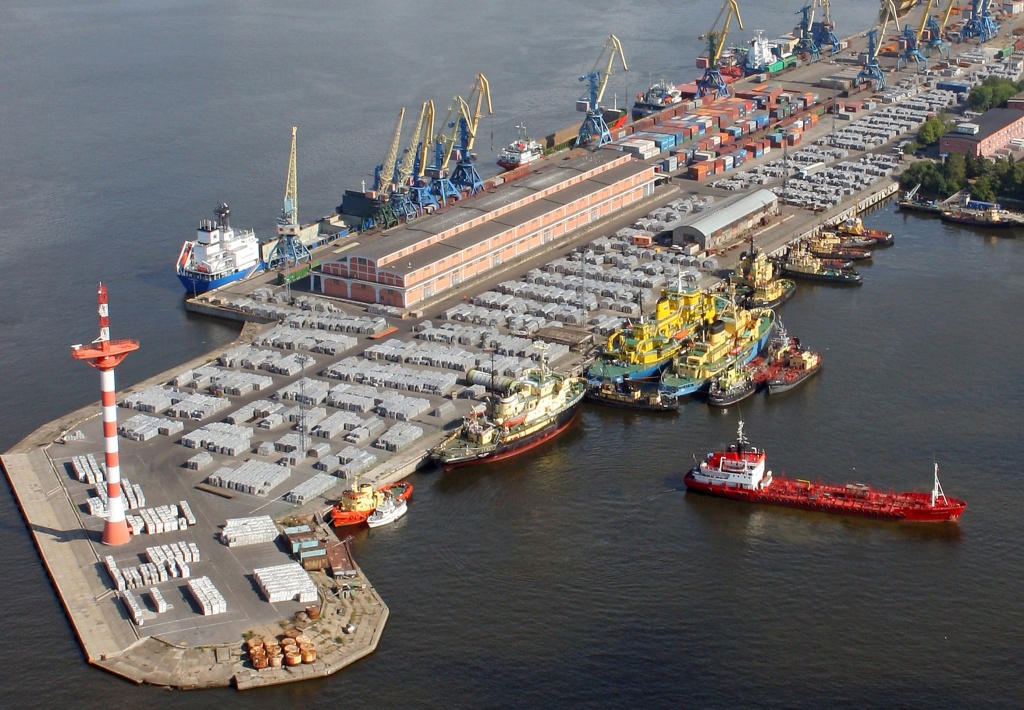A infraestrutura marítima e costeira — incluindo píeres, paredões, docas e pontes — está constantemente exposta a algumas das condições ambientais mais agressivas: água salgada, umidade, cloretos e temperaturas variáveis. Um dos problemas mais persistentes e custosos nesses ambientes é a corrosão das barras de aço em estruturas de concreto armado.
Vergalhões de polímero reforçado com fibra de vidro (GFRP), também conhecidos como vergalhões compostos ou reforço não metálico, oferece uma alternativa altamente eficaz e cientificamente validada às tradicionais barras de aço em aplicações marítimas. Este artigo explora como o PRFV aborda os desafios da corrosão na construção naval, com dados, estudos de caso e comparações de ciclo de vida.
O desafio da corrosão na construção naval
Vergalhões de aço corrói em ambientes ricos em cloreto, o que leva a:
- Expansão e fissuração do concreto
- Capacidade de carga reduzida
- Vida útil reduzida
- Ciclos caros de manutenção e reparo
De acordo com um relatório de 2023 da Sociedade Americana de Engenheiros Civis (ASCE), mais de $20 bilhões são gastos anualmente nos EUA no reparo de infraestrutura marítima danificada pela corrosão.
Em condições de ar salino e submerso, os íons cloreto penetram no concreto e atingem o aço, iniciando a formação de ferrugem. À medida que a ferrugem se expande, ela causa lascamento do concreto, frequentemente exigindo a substituição completa da estrutura em 20 a 30 anos.

GFRP: Uma alternativa livre de corrosão
O vergalhão de PRFV é feito de filamentos contínuos de fibra de vidro incorporados em uma matriz de resina polimérica, tipicamente éster vinílico ou epóxi. É 100% não metálico, o que significa:
- Sem corrosão eletroquímica
- Não afetado por cloretos ou névoa salina
- Não há necessidade de revestimentos protetores
| Propriedade | Barra de aço | Vergalhões de PRFV |
| Resistência à corrosão | Pobre | Excelente (não corrosivo) |
| Vida útil (marítima) | 20–30 anos | 80–100+ anos |
| Necessidades de manutenção | Alto | Mínimo |
| Custo do Ciclo de Vida (LCC) | Alto | 30–40% Inferior |
Aplicações do mundo real e estudos de caso
Caso 1: Restauração de Seawall – Naples, Flórida (EUA)
- Muro de contenção original construído em 1985 com vergalhões de aço.
- Corrosão severa detectada após 27 anos.
- Reconstruído em 2014 com vergalhões de PRFV.
- Nenhum sinal de corrosão ou degradação após mais de 10 anos.
Caso 2: Estruturas de Cais – Porto de Yokohama (Japão)
- GFRP usado em lajes de docas e muros de contenção.
- Projetado para uma vida útil de mais de 100 anos em zonas de maré e respingos.

Caso 3: Instalações de Piscicultura – Noruega

- Tanques e canais de concreto reforçados com vergalhões compostos para eliminar contaminação e prolongar a vida útil.
Esses projetos demonstram a confiabilidade técnica e a economia de longo prazo do GFRP em ambientes marinhos do mundo real.
Desempenho sob exposição marinha
O GFRP passou por extensos testes de durabilidade em condições marinhas simuladas:
- ASTM D7705: Nenhuma perda significativa de resistência após 12 meses de submersão em água do mar a 60°C.
- ACI 440.1R: Endossa o uso de GFRP em estruturas marítimas.
- CSA S807: Reconhece o GFRP como uma alternativa viável ao aço em ambientes agressivos.
O GFRP também é imune a:
- Corrosão galvânica
- Carbonatação
- Corrosão Influenciada Microbiologicamente (MIC)
Benefícios do projeto além da resistência à corrosão
Além da imunidade à corrosão, o GFRP oferece:
- Leve (75% mais leve que o aço) → Transporte mais fácil e instalação mais rápida
- Alta resistência à tração (1000+ MPa) → Comparável ou melhor que o aço
- Não condutividade → Sem interferência com instrumentação ou sensores marinhos
Essas características tornam o GFRP especialmente adequado para plataformas offshore, pontes costeiras e instalações portuárias.
Análise do Custo do Ciclo de Vida (LCC)
Embora o custo inicial por kg de GFRP seja maior (~$1,6 vs $0,8 para aço), o custo geral é significativamente reduzido devido a:
- Sem reparos relacionados à corrosão
- Intervalos de manutenção mais longos
- Manutenção mínima
Exemplo: Uma marina na Nova Zelândia relatou uma redução de custo total de 35% ao longo de 50 anos usando GFRP na construção de píeres em comparação com aço.
| Elemento de custo | Estrutura de aço | Estrutura GFRP |
| Material Inicial | Mais baixo | Mais alto |
| Frequência de reparo | A cada 10–15 anos | Nenhum esperado |
| LCC (período de 50 anos) | $1.00M | ~$650K |
Apoio e Adoção Regulatória
O GFRP é aprovado por vários códigos internacionais:
- ACI 440.1R (EUA)
- CSA S807 (Canadá)
- EN 1992-3 (projeto da UE)
- Diretrizes do FDOT e da Caltrans
Esses reconhecimentos garantem a adoção do GFRP em projetos de infraestrutura pública, portos e defesa.
Saber mais: ACI 440.11-22 Explicado: Como Projetar Concreto com Vergalhões de PRFV nos EUA
Conclusão: O Futuro do Reforço Marítimo
Em ambientes onde o ataque por cloreto, umidade e sal são inevitáveis, as barras de aço tornam-se um problema. As barras de PRFV são a solução de longo prazo e tecnicamente superior, oferecendo resistência à corrosão, benefícios econômicos e conformidade regulatória.
Com a crescente demanda por infraestrutura durável e sustentável, as barras de reforço compostas estão liderando a transformação da construção naval. Se você planeja construir ou reformar infraestrutura costeira, Composite-Tech fornece tecnologia de ponta Equipamentos de produção de vergalhões de PRFV—projetado para desempenho, eficiência e padrões internacionais.


